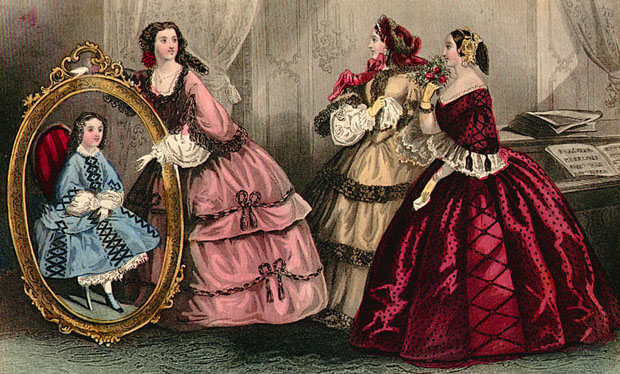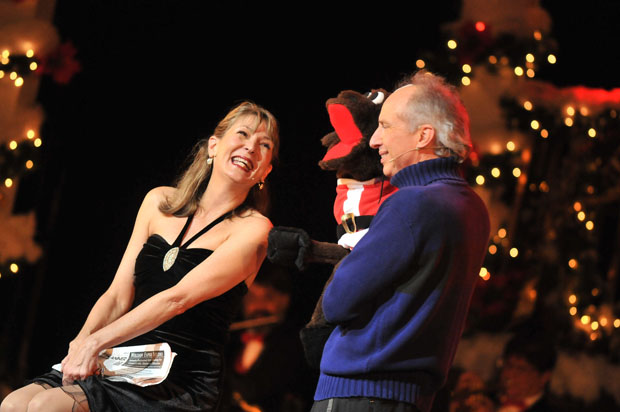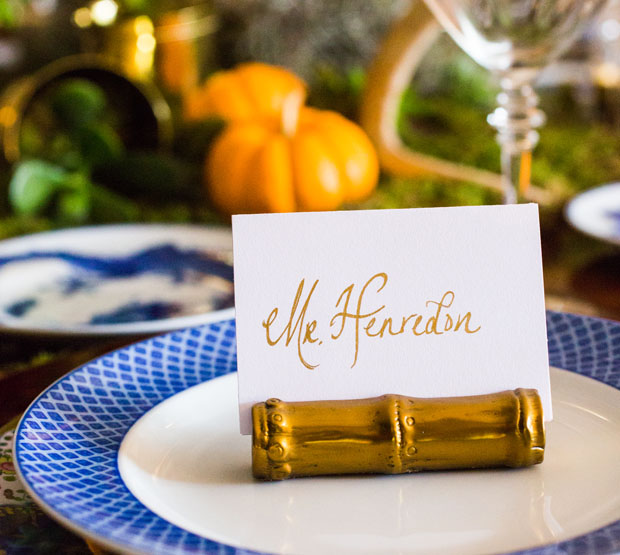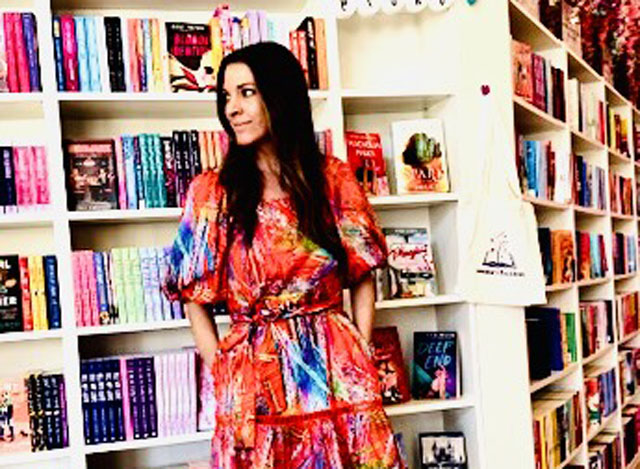Charleston Christmas in 1860
13 Nov 2015
As the war between the North and South grew more eminent, the Christmas celebration in 1860 was in a crisis
By SUZANNAH SMITH MILES

In December 1860, Charleston shimmered with wealth and prosperity. The city was at the zenith of antebellum splendor. Here was the Victorian Era in all its exaggerated affectations, with ladies in lace-frilled hoopskirts and dandies in top hats carrying gold-knobbed walking sticks. Home interiors were dressed with heavy mahogany furniture. “Turkey” carpets covered the highly polished floors.
From the great mansions along the Battery to stately single houses in Wraggsboro, front doors were bedecked in greenery for the holidays. Inside, the cedar tree was trimmed and its tallow candles ready for lighting on Christmas Eve.
King Street’s store windows brimmed with holiday cheer, with shops offering everything from Christmas confections and children’s toys to “bonnets, flowers and feathers.” Adding to the gaiety, the famous George Christy’s Minstrel Show was in town. During their Christmas afternoon show they promised to give out 600 presents to children.
“We pass our evenings very pleasantly with music and reading & sewing & talking,” wrote Meta Morris Grimball in her journal. She and her husband, John Berkley Grimball, lived on their plantation south of Charleston. Their Christmas tree was “fixed off in a very lively and interesting manner,” she wrote, and decorated with ships and dressed dolls and lighted by little tapers.
“It seems strange that we should be in the midst of a revolution,” she mused. All was “just the same & a great Empire tumbling to pieces about us.” She later added wistfully, “I do hope there will be no war, but a peaceful arrangement of our difficulties.”
Meta Grimball had cause for worry. On December 20, South Carolina had seceded from the Union. Wrote planter and botanist Dr. William Henry Ravenel from his plantation in upper Berkeley County, “I now consider civil war inevitable.”
War clouds were looming. Yet Charlestonians were determined to have a joyful Christmas.
“King-street never presented a gayer and more lovely appearance than it did on the twenty-fourth of December,” reported the Charleston Courier. “It was alive with innocence and beauty. Sweet things and pretty things were purchased with a freedom and pleasure that showed clearly that the Yule-purse had not been affected by the state of change.”
Likewise the Charleston Mercury reported that despite the rain which had soaked the town on Christmas Eve, spirits were lively.
“King-street was thronged by indulgent mammas and sanguine youngsters, all intent upon Christmas. The markets were crowded, and a brisk business was driven in turkeys, and all the multifarious good things which go to make up the Christmas dinner—everybody—young and old—seemed to be affected with a kind of preliminary jollity. The misty shop windows—decked as they are in no other time—shone temptingly upon the muddy youngsters who were so fortunate as to have escaped from the parental roof to revel in the full fruition of Christmas fun and Christmas fog. Within doors there was the usual frolic and enjoyment, and the fact that they were no longer people of the United States, did not diminish a whit of the zest with which people relished their turkeys and demolished their plum puddings and mince pies.”
Yet change would come and happen far more rapidly than anyone anticipated. On Christmas night, Major Robert Anderson, commander of the Federal garrison at Fort Moultrie on Sullivan's Island, gave orders to spike the guns, burn the gun carriages and evacuate Fort Moultrie. Anderson's garrison of approximately eighty-five men then rowed undetected across the harbor to the still unfinished island fortress, Fort Sumter.
With the Union garrison was Abner Doubleday, captain and second-in-command, who later described the event in his book, Reminiscences of Forts Sumter and Moultrie in 1860-61. “Everything being in readiness, we passed out of the main gates, and silently made our way for about a quarter of a mile to a spot where the boats were hidden behind an irregular pile of rocks, which originally formed part of the sea-wall. There was not a single human being in sight as we marched to the rendezvous… We found several boats awaiting us… their crews were crouched down behind the rocks, to escape observation. In a low tone they pointed out to me the boats intended for my company.”
Only two days later, on the evening of December 27, Colonel Johnston Pettigrew, leading detachments from the Washington Light Infantry, the Meagher Guards and the Carolina Light Infantry took the small Federal garrison at Castle Pinckney without incident. Later that night, under the direction of Lt. Col. William G. DeSaussure, four artillery units consisting of 225 men took possession of Fort Moultrie. On The morning of December 30, the United States Arsenal on Ashley Avenue was taken without a fight by South Carolina troops, gaining possession of some 22,430 pieces of ordnance, from pistols to cannons.
For some months, both North and South had been anticipating the potential of armed conflict. Anderson's move to Fort Sumter became the rallying cry for both sides. The North saw it as a legal act toward the protection of Federal property. Conversely, the South regarded the fort, along with Fort Moultrie and Castle Pinckney, as rightfully theirs. Both sides fully believed their actions were legal and legitimate.
Like almost every young man in Charleston at the time, twenty-one year old Charles Kaufman Rogers was eager for the fight. “Preparations for war are actively prosecuted,” he wrote in a letter to his sister, Mrs. Emeline Rogers Divver, nicknamed Liney. “I have joined the Charleston Riflemen and as soon as I can get my uniform I will be into service. I’m ready if we have to fight.”
Meanwhile, Steele & Company, Southern Hatters, at 231 King Street was offering the sale of palmetto hats to be worn later in warmer weather. “The men may be on the battle field,” their ad touted, “and will much need Straw Hats”
The words of South Carolina poet and elder statesman William John Grayson perhaps best describes the attitude of Charleston at the time. “I have now reached the great event of the age—the dissolution of the North American Republic,” he wrote in his journal. “I witnessed the death of the great Republic with sorrow. I was born with it and I survive it... The causes of discontent were grave and numerous. The policy of the Federal government had been adverse for years to the interests and rights of the Southern people. Their agriculture had been sacrificed to Northern manufacturers; their social condition had been a target for the persistent, scurrilous attacks of the Northern press and pulpit… less insult has often produced War between nations.”
Before the New Year was begun, the lines had been drawn in the sand. Within four months, the first thundering shots of the war would echo across the harbor with the firing on Fort Sumter on April 12-13, 1861.
But during that last Christmas of antebellum Charleston, with the candles lit on the trees and the music of George Christy’s Minstrels resounding, there was an almost gleeful eagerness for the fight to come. Most felt hostilities would last no longer than six months.
Nobody, North or South, could know what a terrible four years of war was on the horizon. They were as innocent to this awful future as Meta Grimball when she wrote, “The Christmas passed very pleasantly with us, the boys were all here… Papa dined with us, and we had a nice dinner and were pleasant.”
Indeed, for most Charlestonians, the Christmas of 1860 would be the last in a way of life that was about to be turned upside down.
Charleston Christmas Today:
Charleston celebrates Christmas today as magnificently as it did in the antebellum years, and the town’s many museum houses and historic plantations are splendidly decorated for the holidays. Many host special activities such as the “Christmas in 1860” event at the Edmondston-Alston House on East Battery. Living historians in period clothing give candlelight tours while telling the story of Charleston’s last opulent Christmas before the start of the Civil War. Members of the Charleston Light Infantry provide military escort. The event is held on December 4 & 11, 2015, from 6:30 - 8:30 p.m., with tours given continuously. Edmondston-Alston House, 21 East Battery, Charleston. For more information call 843.722.7171 or go to edmondstonalston.com.












